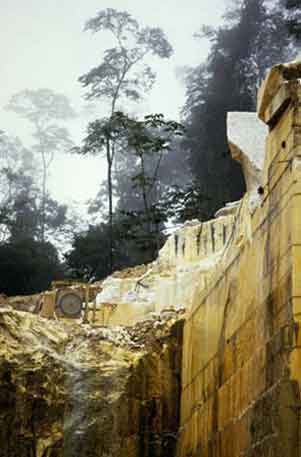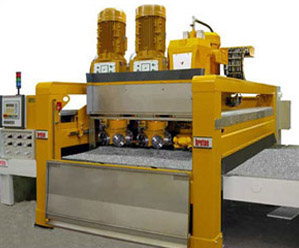Natural Stone | How It's Made
In this section we explain how a stone is manufactured. This information can be very advantageous because it enables you to understand stone from the beginning and evaluate its performance aspects: why certain stone floors wear better and longer. Plus, perhaps most important, understanding how a stone floor is created can help you better determine the value of stone keep you inside the borders of your budget.
- blocks of stone are cut from earth with diamond studded, high speed equipment
- diamond wire cutting system revolutionized the extraction process
- blocks then moved to a processing plant
- then cut into slabs
- takes 2 days for a saw to cut a 20 ton block of stone
- sent through a polishing machine for the finish
- finishes range from rough, rustic texture to mirrored polish
- slab is calibrated to uniform thickness
- customized for specific installations
- edges shaped and polished
- for tiles, slabs are just cut down
- polished with a different machine than slabs
- tiles packaged, shipped and stored (vertically only)
Manufactured Stone
- also called Agglomerate Stone
- synthetic stone made from natural stone chips
- suspended in a binder such as cement, epoxy resins or polyester
- popular types made mostly of quartz
- natural quartz gives depth, strength and consistency
- offers look of natural stone but can be more cost-effective
- available in a wide array of colors from neutrals to brights
- scratch resistant but not scratch proof
- doesn’t require sealing because it’s non-porous
- highly resistant to staining, very hygienic and maintenance free
- four times the flexural strength of granite, less chance of chipping or cracking
- can be used in many applications including flooring



